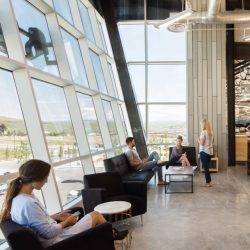 The modern workplace is undergoing significant change, and it’s no surprise that many of these changes are driven by the adoption of new technologies. However, unlike previous eras of technological change, most of the technologies being adopted by organizations today have the potential to offer more autonomy, choice and flexibility to their employees. This can cause disconnects (literally) with the built environment, but it’s also possible for those who design and manage work spaces to adopt a new mindset to stay in lockstep with technological change and to ensure the creation of positive workplace experiences.
The modern workplace is undergoing significant change, and it’s no surprise that many of these changes are driven by the adoption of new technologies. However, unlike previous eras of technological change, most of the technologies being adopted by organizations today have the potential to offer more autonomy, choice and flexibility to their employees. This can cause disconnects (literally) with the built environment, but it’s also possible for those who design and manage work spaces to adopt a new mindset to stay in lockstep with technological change and to ensure the creation of positive workplace experiences.
So how does this happen? How do we keep people at the center of work in an increasingly technologically-driven workplace? As companies look to define the future of work, this question poses a major challenge to employers of all sizes. A people-centered future workplace begins with decision-making centered around people’s’ changing expectations, behaviors and needs. The right workplace tools will anticipate and improve existing work patterns rather than insist upon new ones to enable productivity and improve the overall workplace experience — something that too many employers overlook.
The legacy of old technology for today’s workplace
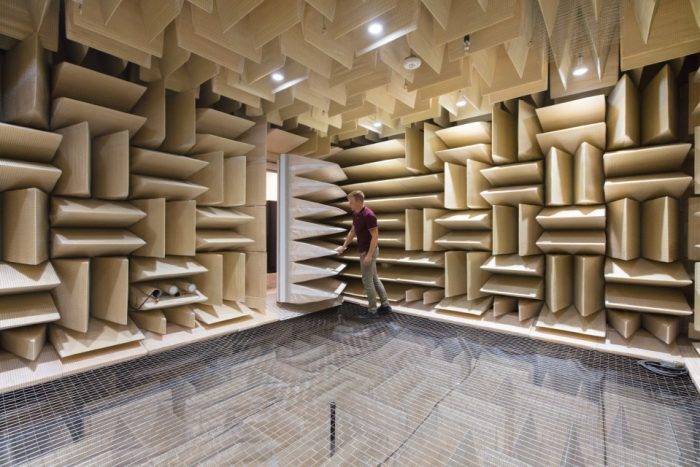 To move beyond outdated methods of workplace planning, it’s important to recognize the historical influence of technology on today’s workplace design. If we look back to the 1950’s and 1960’s, there was a movement born of the German concept of Bürolandschaft to create more organic, collaborative workplace designs to enable new types of work. However, it was the rise of the personal computer that curtailed this movement and helped to create the dense, desk-intensive floor plans that were, until recently, the standard for global office design.
To move beyond outdated methods of workplace planning, it’s important to recognize the historical influence of technology on today’s workplace design. If we look back to the 1950’s and 1960’s, there was a movement born of the German concept of Bürolandschaft to create more organic, collaborative workplace designs to enable new types of work. However, it was the rise of the personal computer that curtailed this movement and helped to create the dense, desk-intensive floor plans that were, until recently, the standard for global office design.
Desktop computing and telephony essentially mandated that a person conduct most of their individual work in a fixed location, and over many decades, there grew an (accurate) assumption that people must conform their work to the technology and spaces provided to them by their employer. In essence, both the spaces and the work were designed around the dominant tools of the era, and today many workplaces are still designed using these outdated assumptions.
However, in the last ten years the rise of mobility has been game-changing. Today, most employees critical technologies don’t reside in a single location but instead travel with them in their pockets, purses or backpacks. Perhaps without realizing they were doing so, Information Technology (IT) teams enabled new levels of user autonomy, freeing people not just from their desktop technologies, but from their actual desk tops.
Embracing employees as consumers
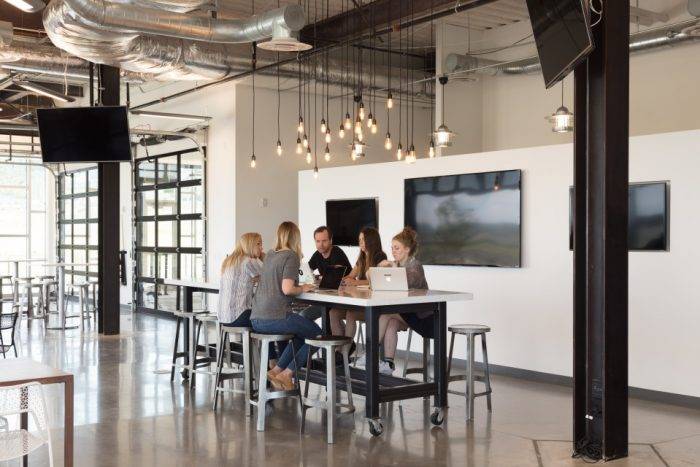 Today, Activity Based Work (ABW) and team-centered Agile workplace strategies have gained widespread adoption in many parts of the world. These strategies, which emphasize offering employees a wider variety of shared spaces, are an excellent means of better supporting mobile work. However, it isn’t enough to simply provide a greater range of environments to support a greater range of activities. Instead, these workplace strategies should be built upon a fundamental understanding that employees are consumers of spaces – they are actively shopping what spaces best support their work, both within and beyond their employer’s workplace.
Today, Activity Based Work (ABW) and team-centered Agile workplace strategies have gained widespread adoption in many parts of the world. These strategies, which emphasize offering employees a wider variety of shared spaces, are an excellent means of better supporting mobile work. However, it isn’t enough to simply provide a greater range of environments to support a greater range of activities. Instead, these workplace strategies should be built upon a fundamental understanding that employees are consumers of spaces – they are actively shopping what spaces best support their work, both within and beyond their employer’s workplace.
Seeing employees as consumers is a well recognized concept in the IT world and the impact of consumer technologies and consumer mindsets upon IT organizations is typically referred to as “consumerization.” Gartner, one of the world’s leading research firms, notes, “Consumerization is not a strategy or something to be ‘adopted.’ Consumerization can be embraced and it must be dealt with, but it cannot be stopped.”
This demand for more intuitive, user-friendly technology tools has significantly impacted IT organizations over the last ten years. IT leaders grew to recognize that the solutions they were investing in had new competition from the consumer world that were easier to adopt and more enjoyable to use. Many IT leaders eventually embraced consumerization by changing their ditching the use of heavily standardized enterprise technologies and instead actively uncovering unmet employee needs and studying what types of solutions employees are adopting on their own without the support of IT. Because employees can choose to use simpler consumer technologies such as Dropbox and Facetime as alternatives to solutions like Sharepoint and telepresence video conferencing, it has required IT organizations to take a more human-centered approach that emphasizes simple, intuitive, and enjoyable experiences over enterprise standardization.
Keeping people at the heart of things
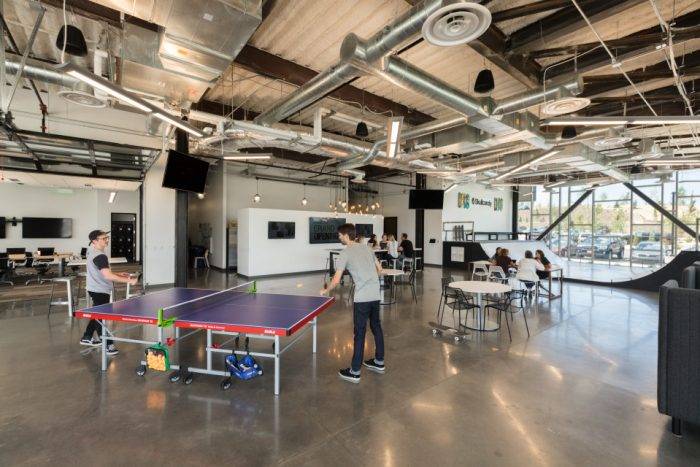 Consumerization isn’t just an IT thing. The Human Resource (HR) world has been evaluating the impacts of consumer mindsets and solutions on employee experiences for the past several years , and we must recognize the effects of consumerization to Facility and Real Estate teams as well. Offering more choices of work environments to support a broader range of work activities is an important step, but it must be coupled with a focus on understanding of employees as consumers.
Consumerization isn’t just an IT thing. The Human Resource (HR) world has been evaluating the impacts of consumer mindsets and solutions on employee experiences for the past several years , and we must recognize the effects of consumerization to Facility and Real Estate teams as well. Offering more choices of work environments to support a broader range of work activities is an important step, but it must be coupled with a focus on understanding of employees as consumers.
This begins with better understanding employees attitudes and mindsets during the program development process and gaining an understanding of how current spaces are perceived. What spaces within the workplace are most desirable? Which ones are least desirable? Do they clearly convey their intended purpose? What are the frictions that inhibit the productive use of space? And perhaps the most important question to ask is, “Where do employees go to work outside of the office and why?” because it recognizes that corporate office spaces are actually in competition with a whole host of other places ranging from employees’ homes to public spaces to coworking locations.
Through this process of understanding employee choice, it’s possible to replace antiquated assumptions about workplace planning and embrace new approaches – and even new roles – focused on improving workplace experience. There are already significant strides being made in treating employees as consumers of space, and not surprisingly many of the organizations often are cited as being on the cutting edge of workplace experience are consumer technology companies. Moving forward, employees no longer must conform their work patterns to the locations where their technologies reside – that’s a thing of the past. Having been enabled with greater choice and autonomy to adopt technologies suited to their needs, employees must be provided spaces that they deem intuitive, productive and enjoyable. Only then can people live at the center of workplace design in an era of rapidly changing work.
All images: Skullcandy headquarters in Utah designed by Think Architecture and Design
___________________________________
 Ryan Anderson is VP of Product Marketing and Workplace Strategy for workplace analytics firm Teem
Ryan Anderson is VP of Product Marketing and Workplace Strategy for workplace analytics firm Teem



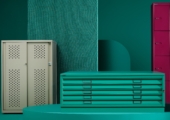















June 12, 2018
Keeping people at the heart of the modern workplace
by Ryan Anderson • Comment, Technology, Workplace design
So how does this happen? How do we keep people at the center of work in an increasingly technologically-driven workplace? As companies look to define the future of work, this question poses a major challenge to employers of all sizes. A people-centered future workplace begins with decision-making centered around people’s’ changing expectations, behaviors and needs. The right workplace tools will anticipate and improve existing work patterns rather than insist upon new ones to enable productivity and improve the overall workplace experience — something that too many employers overlook.
The legacy of old technology for today’s workplace
Desktop computing and telephony essentially mandated that a person conduct most of their individual work in a fixed location, and over many decades, there grew an (accurate) assumption that people must conform their work to the technology and spaces provided to them by their employer. In essence, both the spaces and the work were designed around the dominant tools of the era, and today many workplaces are still designed using these outdated assumptions.
However, in the last ten years the rise of mobility has been game-changing. Today, most employees critical technologies don’t reside in a single location but instead travel with them in their pockets, purses or backpacks. Perhaps without realizing they were doing so, Information Technology (IT) teams enabled new levels of user autonomy, freeing people not just from their desktop technologies, but from their actual desk tops.
Embracing employees as consumers
Seeing employees as consumers is a well recognized concept in the IT world and the impact of consumer technologies and consumer mindsets upon IT organizations is typically referred to as “consumerization.” Gartner, one of the world’s leading research firms, notes, “Consumerization is not a strategy or something to be ‘adopted.’ Consumerization can be embraced and it must be dealt with, but it cannot be stopped.”
This demand for more intuitive, user-friendly technology tools has significantly impacted IT organizations over the last ten years. IT leaders grew to recognize that the solutions they were investing in had new competition from the consumer world that were easier to adopt and more enjoyable to use. Many IT leaders eventually embraced consumerization by changing their ditching the use of heavily standardized enterprise technologies and instead actively uncovering unmet employee needs and studying what types of solutions employees are adopting on their own without the support of IT. Because employees can choose to use simpler consumer technologies such as Dropbox and Facetime as alternatives to solutions like Sharepoint and telepresence video conferencing, it has required IT organizations to take a more human-centered approach that emphasizes simple, intuitive, and enjoyable experiences over enterprise standardization.
Keeping people at the heart of things
This begins with better understanding employees attitudes and mindsets during the program development process and gaining an understanding of how current spaces are perceived. What spaces within the workplace are most desirable? Which ones are least desirable? Do they clearly convey their intended purpose? What are the frictions that inhibit the productive use of space? And perhaps the most important question to ask is, “Where do employees go to work outside of the office and why?” because it recognizes that corporate office spaces are actually in competition with a whole host of other places ranging from employees’ homes to public spaces to coworking locations.
Through this process of understanding employee choice, it’s possible to replace antiquated assumptions about workplace planning and embrace new approaches – and even new roles – focused on improving workplace experience. There are already significant strides being made in treating employees as consumers of space, and not surprisingly many of the organizations often are cited as being on the cutting edge of workplace experience are consumer technology companies. Moving forward, employees no longer must conform their work patterns to the locations where their technologies reside – that’s a thing of the past. Having been enabled with greater choice and autonomy to adopt technologies suited to their needs, employees must be provided spaces that they deem intuitive, productive and enjoyable. Only then can people live at the center of workplace design in an era of rapidly changing work.
All images: Skullcandy headquarters in Utah designed by Think Architecture and Design
___________________________________